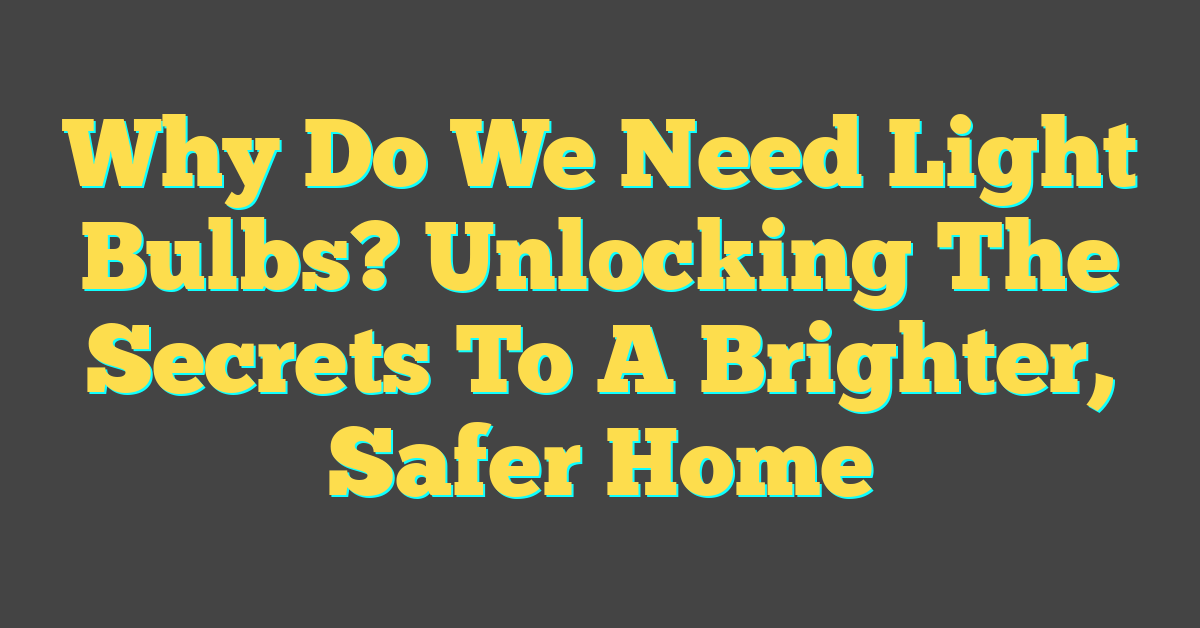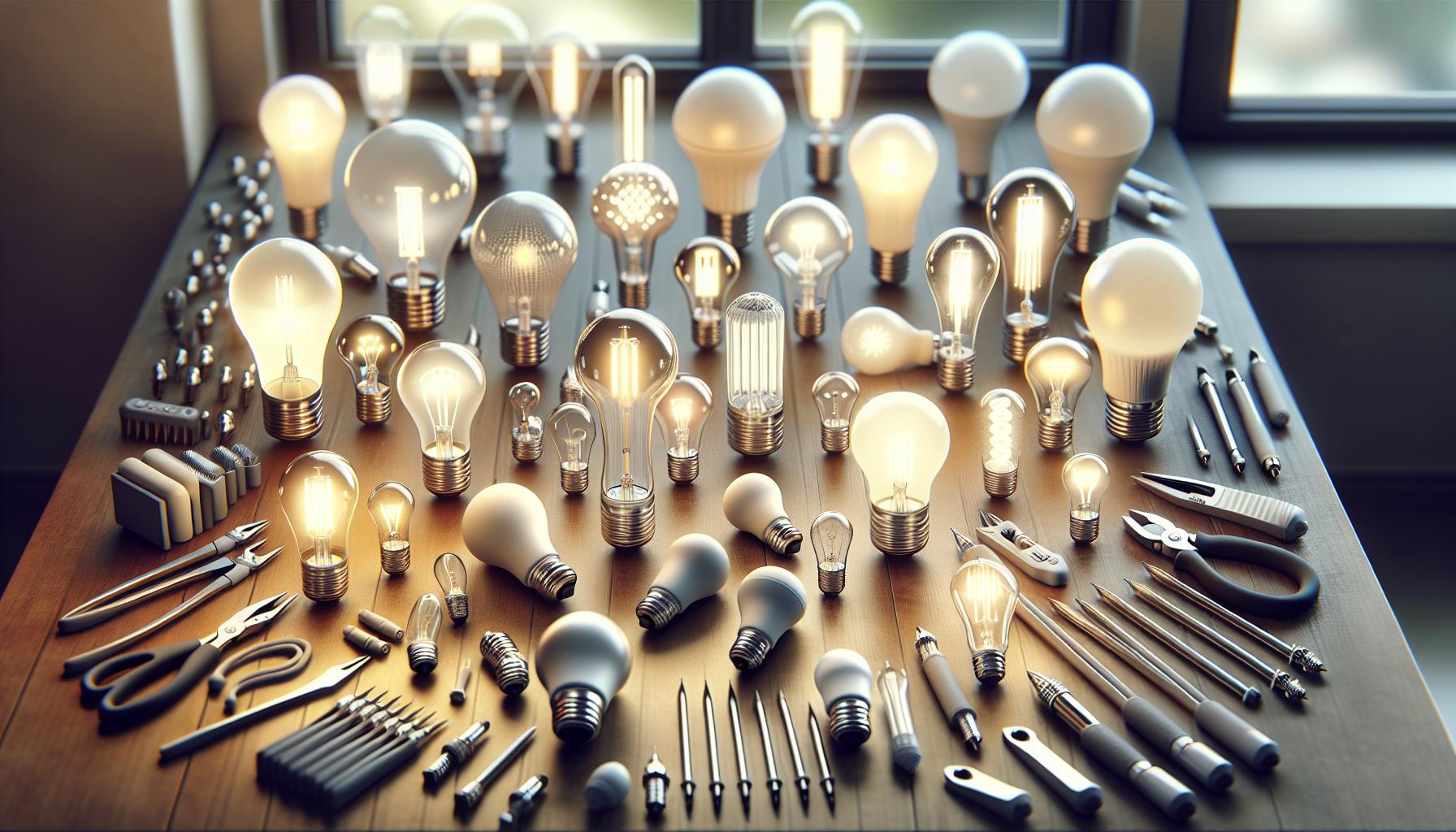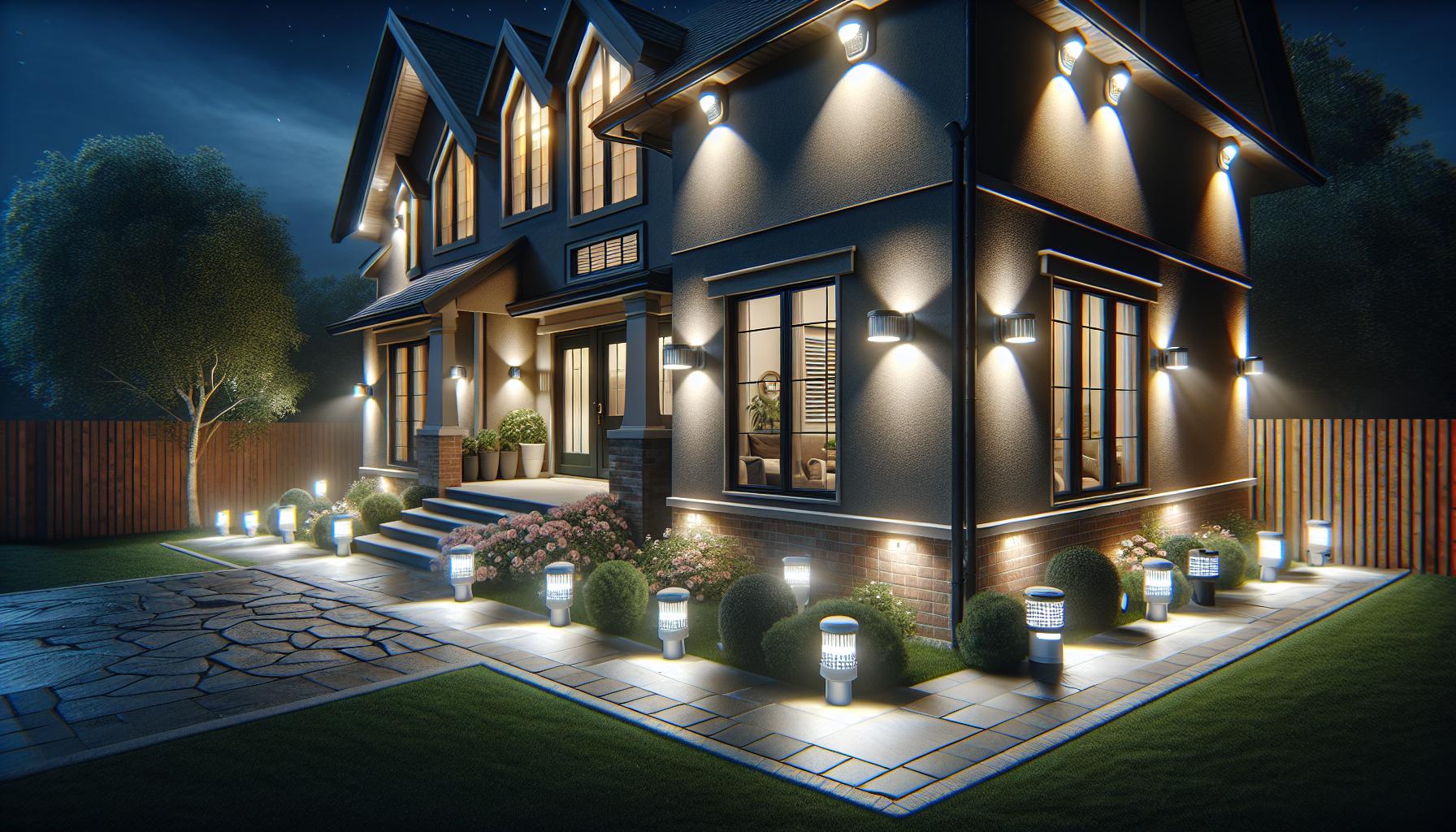Imagine life without light bulbs. You’d be relying on candles or natural light, wouldn’t you? That’s not just inconvenient; it’s a step back into the dark ages, literally. Light bulbs are the unsung heroes in your daily life, often overlooked until they flicker out.

They do more than just brighten up a room. Light bulbs extend your productive hours well past sunset, enhance safety, and have a profound impact on your mood and well-being. Let’s shed some light on why these brilliant inventions are absolute must-haves in every corner of your world.
Advantages of Light Bulbs
When you pause to consider the variety of light bulbs available today, you’ll find each type boasts its own set of advantages. From incandescent warmth to the energy efficiency of LEDs, light bulbs are the unsung heroes in your everyday life.
Incandescent bulbs, though less energy-efficient, offer a warm glow that’s perfect for creating a cozy atmosphere. Their full-spectrum light output—it’s like a mini-sun in your living room—can enhance your home’s ambiance. Perfect for those DIY mood lighting projects you love to tackle on the weekend.
Compact fluorescent lamps (CFLs), on the other hand, consume less power and have a longer lifespan. They’re your go-to for lighting up your workspace without running up the electricity bill. Imagine spending more time at your makeshift workshop, tweaking and perfecting, without the looming guilt of excessive energy use.
Switching gears, let’s talk about LEDs. Their longevity and energy-saving prowess are unmatched. An LED can last up to 25 times longer and use at least 75% less energy than an incandescent bulb. Impressive, right?
Here’s some data to illustrate:
| Bulb Type | Lifespan (hours) | Energy Use |
|---|---|---|
| Incandescent | 1,000 | High |
| CFL | 8,000 | Medium |
| LED | 25,000 | Low |
Not to forget, light bulbs greatly impact the visuals in your space, which is crucial when you’re showcasing your latest home project. The right lighting can make your DIY accomplishments pop, leaving visitors in awe of your handiwork.
Light bulbs also play a significant role in your daily routines. From the wake-up light that greets you in the morning to the dimmable light that ushers you into a peaceful sleep at night, the versatility of light bulbs syncs perfectly with your life’s tempo.
And don’t overlook their contribution to Home Security. Well-lit spaces deter potential intruders, keeping your home and hard work safe from unwanted disturbances. Strategic lighting outdoors can highlight your landscaping prowess while serving as a beacon of safety.
Extending Productive Hours

Imagine trying to complete a puzzle in the dark. Sounds impossible, right? That’s pretty much what tackling any task would be like without the invention of the light bulb. Efficiency plummets and productivity almost grinds to a halt as the sun sets. But thanks to these luminous inventions, you’re able to extend your day well beyond the limited natural light.
Your DIY projects don’t have to end at dusk. With proper lighting, you can paint, build, and craft whenever inspiration strikes. Whether you’re refurbishing an old chest of drawers or installing new shelves, light bulbs ensure your vision and precision aren’t compromised by the setting sun.
- Incandescent bulbs cast a warm, soothing glow perfect for evening projects that demand a less intense light and a bit more ambiance.
- CFLs offer a cooler light, which is quite beneficial when you’re trying to differentiate between similar colors or require a bright, consistent light source.
- LEDs shine brightest in terms of versatility and control. Many LED options even include dimming capabilities, allowing you to adjust the brightness to match your project needs without a hitch.
Lighting significantly affects how you perceive the progress of your work, from the subtle hues in your painting to the accurate cuts on a wooden plank. Below is a quick glimpse of how different bulbs can affect your productive hours:
| Type of Bulb | Lifespan | Energy Efficiency |
|---|---|---|
| Incandescent Bulbs | Low | Low |
| Compact Fluorescent | Medium | High |
| LEDs | High | Very High |
The optimal use of light not only allows you to continue your work into the evening hours but also helps in maintaining a high level of quality. The right illumination can make all the difference between a project that’s just okay and one that’s spectacular. Remember, your workspace is only as good as the light that shines upon it.
Enhancing Safety
« Are Light Bulbs Supposed to be Hot? Uncover the Surprising Truth
Is LED Light Bulbs Better? The Shocking Truth About Their Efficiency »

When you’re passionate about DIY projects and lighting, you know that the right illumination goes far beyond aesthetics or productivity. One of the primary roles of lighting in any setting is ensuring safety. Light bulbs prevent accidents and improve security by making hazards visible and deterring potential intruders.
Preventing Accidents
Bright, clear lighting in key areas of your home like stairways, hallways, and entry points minimizes the risk of trips and falls. Especially at night, when natural light is absent, it’s crucial to have reliable light sources that guide your way. Here’s where the trusty light bulb steps in, ensuring you can safely navigate through your home:
- LEDs are ideal for outdoor security lights, staying bright for long periods without needing frequent replacements.
- CFLs may serve well in areas that don’t require instant brilliance since they take a moment to warm up to full brightness.
- Incandescent bulbs emanate a warm glow that can soften the appearance of a space while still offering ample light.
Home Security
Outdoor lighting fixtures play a significant role in home security. A well-lit exterior can discourage trespassers and make your home a less appealing target for unwanted visitors. Strategically placed lights around the perimeter, in the garden, and near entryways can create a secure barrier of visibility.
Deter Potential Intruders
Installing motion-sensor lights that activate upon detecting movement is a simple yet effective way to enhance your security setup. These can be equipped with:
- Bright, energy-efficient LEDs
- Long-lasting CFLs for areas less frequently used
Keep in mind, burglars often choose the path of least resistance. A home that’s lit up might just be enough to persuade them to move along. Consider using timers or smart lights that can be controlled remotely to maintain the illusion of presence even when you’re not there. The idea is to create an environment that’s unwelcoming to threats, but warm and secure for you and your loved ones.
Impact on Mood and Well-being

Lighting does more than just illuminate your surroundings; it significantly affects your mood and overall sense of well-being. As someone who’s keen on DIY home projects, you’ve likely felt the impact firsthand. Imagine walking into a room bathed in soft, warm light—it’s almost like receiving a cozy embrace. It’s not an accident that such an environment feels welcoming and relaxing. Light has a profound effect on emotional health, with color temperatures playing a pivotal role.
Think about the blue light emitted by electronic devices and many modern LED bulbs. While it’s great for mimicking daylight and can help increase alertness and performance, exposure to it during evening hours may disrupt your natural sleep-wake cycle. For a restful night’s sleep, the softer, warmer tones of light, much like those from an incandescent bulb, are conducive to encouraging your body to wind down and prepare for sleep.
The brightness of your lights, measured in lumens, also plays into this dance of well-being. Too bright, and your room feels sterile and unwelcoming; too dim, and you may strain your eyes leading to headaches and fatigue. Finding that sweet spot of luminosity that’s just right for the activity at hand isn’t just visually pleasing—it’s a matter of fostering a sense of peace and comfort in your home.
Interior design enthusiasts often talk about creating a “mood” with lighting, and with good reason. By integrating a mix of light sources and types, you’re able to cater to a host of activities and times of day. Task lighting brightens up work areas, ambient lighting gives off a gentle glow for those laid-back moments, and accent lighting highlights your home’s best features or sets the stage for entertaining.
As you dive into your next DIY lighting project, keep in mind the powerful effect lighting has not only on visibility and aesthetics but on your emotional and psychological well-being too. After all, the right lighting can transform a space from merely functional to a haven that lifts the spirits and soothes the soul.
Importance of Light Bulbs in Everyday Life

Imagine waking up to a world without light bulbs. You’d stumble around trying to get ready for your day, pouring coffee in the dark, barely making out the clothes in your closet. Light bulbs, the unsung heroes of your daily routine, eliminate such chaos, bringing clarity to every task you undertake. They’re pivotal in the seamless progression of your day-to-day activities, from the moment you flick on the bathroom light to the soft glow that lulls you to sleep.
Light bulbs are enablers of productivity and comfort. The right lighting can turn a dreary workspace into a vibrant hub of creativity. Remember that DIY project you aced? Chances are it was under the bright, focused light of an LED bulb. In the kitchen, a well-placed light bulb allows you to chop, fry, and season to perfection, ensuring your culinary creations are as delightful to make as they are to taste.
Safety cannot be overstressed when it comes to the role of light bulbs in your home. Dark stairwells and shadowy hallways are accidents waiting to happen, but with the appropriate lighting, tripping over that last step becomes a worry of the past. Beyond the physical safety, light bulbs contribute significantly to the security of your home. A well-lit exterior is a powerful deterrent to potential intruders, and it gives you the peace of mind you need to enjoy your evenings undisturbed.
Ever notice how certain rooms just feel better? Light brightness and color play huge parts in mood setting. A soft, warm bulb can transform a room into a sanctuary of relaxation, while a daylight-colored bulb can energize and keep you alert. Lighting design isn’t just aesthetic; it’s about crafting environments conducive to happiness and well-being.
Beyond the visible, light bulbs have an invisible impact. They help regulate your circadian rhythm; your body’s natural wake and sleep cycle. Exposing yourself to bright light during the day and dimming the lights in the evening can help maintain a healthy balance, ensuring you’re alert when you need to be and ready to rest when it’s time to wind down.
Conclusion
So there you have it. Light bulbs are more than just fixtures in your home; they’re essential tools that shape your world. They guide your daily life, from the first flicker in the morning to the soft luminescence that lulls you to sleep. Whether it’s setting the mood for a quiet evening or keeping your home safe and secure, the right lighting can make all the difference. Remember, choosing the perfect bulb isn’t just about wattage or style—it’s about enhancing your quality of life. So next time you flip a switch, think about the brilliance you’re bringing into your space.
Frequently Asked Questions
What are the unique benefits of incandescent bulbs?
Incandescent bulbs are known for their warm glow. They provide a cozy ambiance and can instantly make a space feel welcoming.
How do CFLs differ in terms of energy efficiency and lifespan?
Compact Fluorescent Lamps (CFLs) are much more energy efficient than incandescent bulbs and have a longer lifespan, often lasting 8 to 10 times longer than traditional bulbs.
What are the advantages of using LED bulbs?
LED bulbs offer exceptional longevity and are incredibly energy-efficient. They consume less power and can last for years, reducing the frequency of replacements.
How does light bulb choice impact daily routines?
Different types of light bulbs can affect productivity and moods. Choosing the right bulb for the right time of day can influence the body’s natural wake and sleep cycles, and help maintain daily routines.
Can the type of light bulb enhance home security?
Yes, using the right type of lighting can deter potential intruders and improve home security. Strategic placement of certain types of bulbs can create the appearance that a home is occupied even when it’s not.
How does lighting affect mood and well-being?
Lighting, especially the color temperature and brightness, plays a crucial role in setting the mood of a space. Proper lighting can create a cozy and comfortable environment, impacting our overall well-being.
Why is lighting important for safety and accident prevention?
Proper lighting enhances visibility and can significantly reduce the risk of accidents in the home. It’s key in navigating spaces safely and preventing potential hazards.
What lighting techniques can transform a space?
Different lighting techniques, such as task lighting, ambient lighting, and accent lighting, can transform a space by highlighting features, setting a certain mood, or aiding in specific activities.




